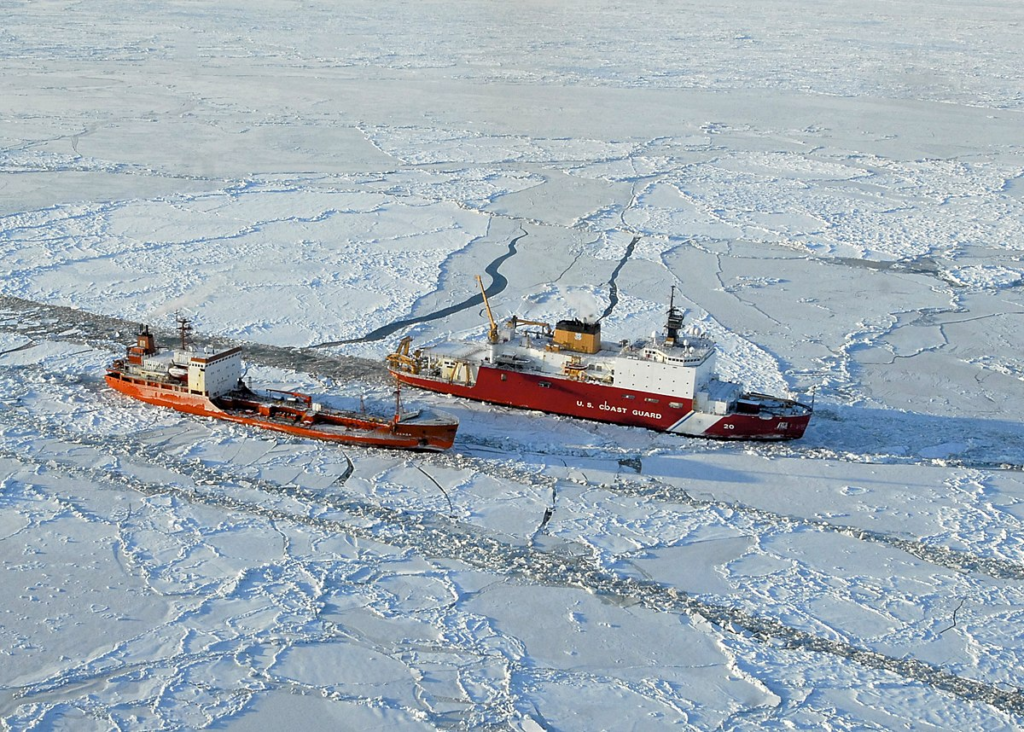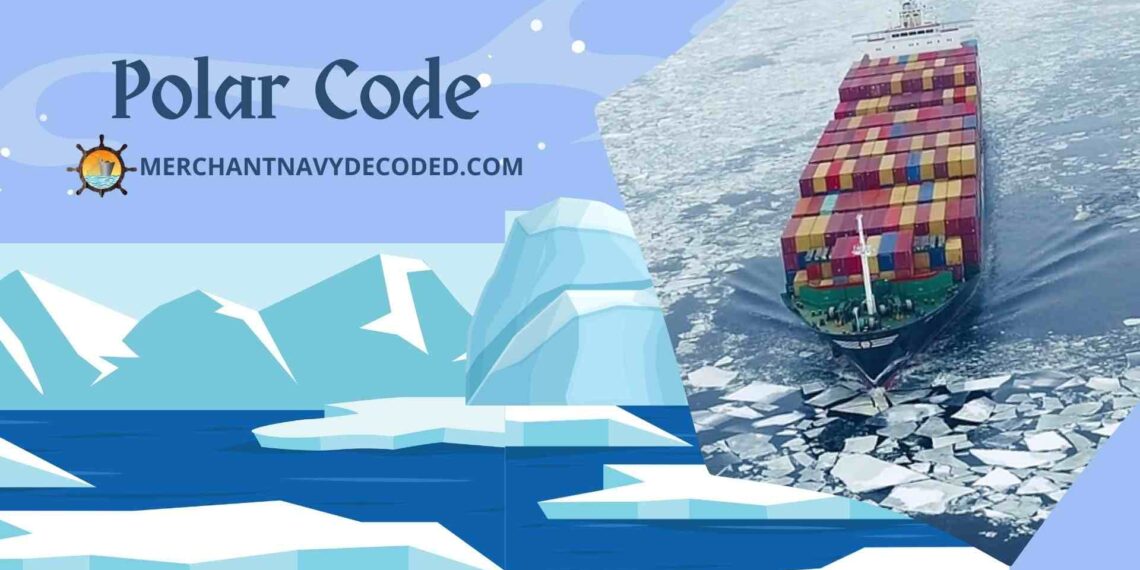What is Polar Code by IMO?
1:- Understanding the Polar Code
The Polar Code, developed by the International Maritime Organization (IMO), is a mandatory set of regulations that governs the safety and environmental standards for vessels navigating polar regions, specifically the Arctic and Antarctic. The Polar Code addresses the distinct challenges posed by these extreme environments, ensuring vessels operate safely while minimizing their impact on the fragile ecosystems found in polar waters. Compliance with the Polar Code is essential for any ship operating in these regions, as it outlines mandatory guidelines for safety and environmental protection.
2:- Objectives of the Polar Code

The Polar Code provides a comprehensive framework covering the design, construction, equipment, operational procedures, crew training, search and rescue, and environmental protection measures needed for vessels in polar waters. It recognizes the additional hazards that these icy waters present, which go beyond those encountered in regular maritime environments. The code integrates with existing international conventions, such as SOLAS, MARPOL, and STCW, to enforce safety protocols, environmental protections, and seafarer competency requirements.
3:- Core Provisions of the Polar Code
The Polar Code specifies several essential standards for ships operating in the Arctic and Antarctic regions:
- Ship Design and Equipment: Vessels must be built to withstand polar conditions, including freezing temperatures and the presence of ice. This involves reinforced hulls and specialized equipment, such as ice radars and survival gear, designed for extreme cold environments.
- Crew Training: Crewmembers, especially those responsible for navigation, must complete specialized training to understand ice navigation, the behavior of ice, and emergency procedures specific to polar environments.
- Emergency Preparedness: Ships are required to carry survival equipment appropriate for polar conditions, including thermal protective clothing and supplies. Additionally, vessels must have comprehensive search-and-rescue plans tailored for the remote and harsh conditions of polar regions.
- Environmental Protection: To protect sensitive polar ecosystems, the Polar Code imposes strict rules on pollution control. Vessels must adhere to regulations prohibiting the discharge of oil, sewage, garbage, or other harmful substances. Compliance with the Polar Code’s environmental measures is vital for minimizing human impact on these vulnerable areas.
4:- Polar Code Ship Categories

Ships navigating polar waters are classified into three categories based on the types of ice conditions they are designed to operate in:
- Category A: Vessels designed for operation in medium first-year ice that may include some old ice inclusions.
- Category B: Vessels built to operate in thin first-year ice.
- Category C: Vessels intended for operation in open water or less challenging ice conditions compared to Categories A and B.
These classifications ensure that vessels only operate within their capabilities, as outlined in the Polar Code, to enhance safety and environmental protection.
5:- Regulatory Requirements of the Polar Code

1. Polar Code Part I-A: Safety Standards
To comply with the Polar Code’s safety regulations, vessels must:
- Obtain a Polar Ship Certificate, which confirms that the vessel meets the Polar Code’s requirements.
- Develop and maintain a Polar Water Operational Manual (PWOM), which provides vessel-specific procedures for safe operation within the limits of the ship’s design capabilities in polar regions.
- Ensure that crew members have undergone the necessary training and possess the relevant certification for operating in polar waters.
- Plan voyages thoroughly before entering polar regions to manage risks and ensure safety.
2. Polar Code Part II-A: Environmental Protection Standards
Environmental protection is a key aspect of the Polar Code. Ships must:
- Update onboard documentation, such as pollution prevention records, to include requirements from MARPOL Chapters I, II, IV, and V.
- Adhere to operational guidelines prohibiting the discharge of oil, oily mixtures, or harmful substances in polar waters.
3. Crew Certification and Training
Shipowners must ensure that officers and crew members operating vessels under SOLAS regulations in polar waters complete specialized training programs to develop skills in polar navigation and emergency management. Certification of competence must be issued by the appropriate maritime authority, demonstrating that crew members meet the standards outlined in the Polar Code.
4. Operational Compliance
- Safety Operations: Ships must conduct voyage planning, operate within the constraints of their Polar Ship Certificate, and monitor for ice and snow accumulation. Crew members and passengers must also be trained on the proper use of safety and survival equipment.
- Environmental Operations: Vessels must comply with MARPOL environmental requirements and record their operations in polar regions accurately in logbooks, manuals, and emergency plans.
6:- Conclusion
The Polar Code is an essential international framework designed to safeguard ships and protect the environment in the Arctic and Antarctic regions. It outlines critical requirements for vessel design, construction, equipment, and crew training, ensuring ships are prepared for the extreme and sensitive conditions in polar waters.
7:- Polar Code Frequently Asked Questions (FAQs)
The Polar Code is an international safety and environmental framework for vessels operating in polar waters, established by the IMO to tackle the unique challenges and hazards of polar navigation.
Yes, the Polar Code is mandatory under both SOLAS and MARPOL conventions, making it obligatory for ships operating in polar regions.
Ships are classified into three categories (A, B, or C) based on the ice conditions they are designed to navigate through.
Compliance includes carrying a Polar Ship Certificate, developing a Polar Water Operational Manual, ensuring crew training, and following environmental protection regulations.
Masters, chief mates, and officers in charge of a navigational watch on SOLAS vessels operating in polar regions must complete specialized training and obtain certification to demonstrate their competence.
The PWOM offers vessel-specific guidance for safe operation in polar regions, ensuring compliance with the ship’s limitations and capabilities under the Polar Code.
Disclaimer :- The opinions expressed in this article belong solely to the author and may not necessarily reflect those of Merchant Navy Decoded. We cannot guarantee the accuracy of the information provided and disclaim any responsibility for it. Data and visuals used are sourced from publicly available information and may not be authenticated by any regulatory body. Reviews and comments appearing on our blogs represent the opinions of individuals and do not necessarily reflect the views of Merchant Navy Decoded. We are not responsible for any loss or damage resulting from reliance on these reviews or comments.
Reproduction, copying, sharing, or use of the article or images in any form is strictly prohibited without prior permission from both the author and Merchant Navy Decoded.



